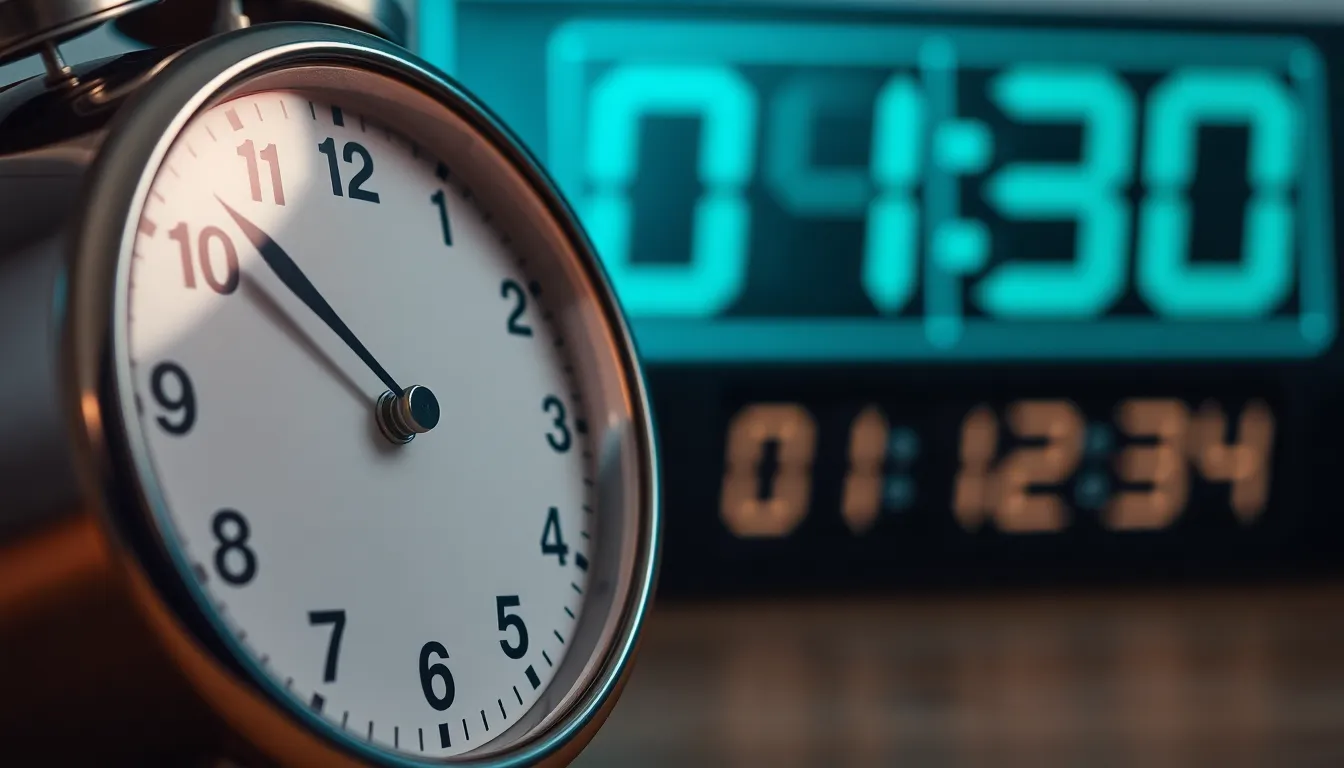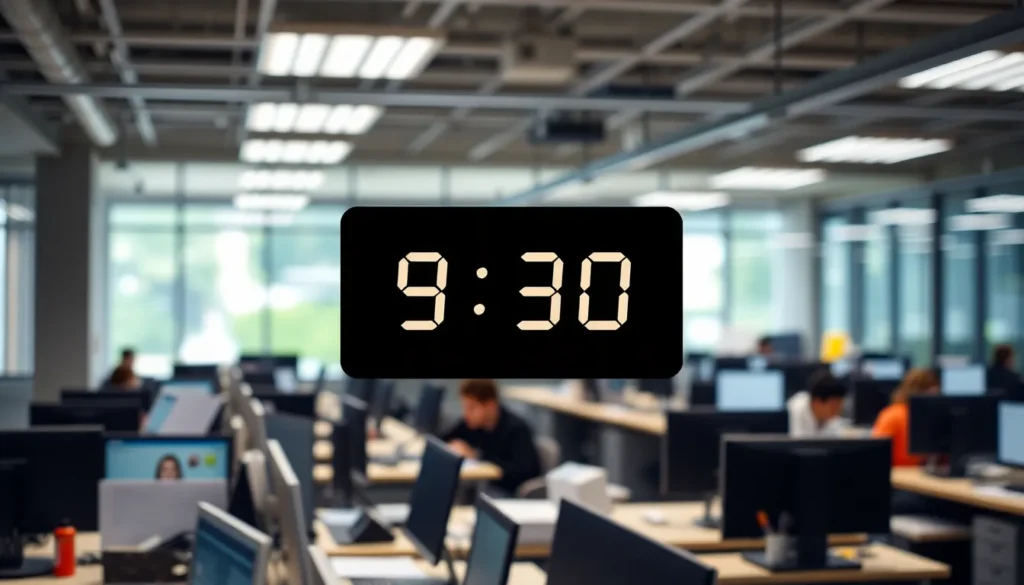Time is a constant in everyone’s lives, yet it often feels elusive. Whether planning a meeting, catching a train, or simply trying to enjoy a moment, knowing how long until a specific time can be crucial. When the clock ticks toward 9:51, many find themselves wondering just how much time they have left to prepare or make a decision.
Understanding the time left until 9:51 isn’t just about numbers; it’s about making the most of every minute. This article dives into the various ways to calculate the time remaining, helping readers stay organized and on track. With practical tips and insights, it’s easier than ever to manage time effectively as that crucial moment approaches.
Table of Contents
ToggleUnderstanding Time Intervals
Understanding time intervals enhances decision-making. Knowing the time left until 9:51 aids in effective planning and prioritization.
Importance of Time Management
Effective time management directly affects productivity. Prioritizing tasks helps individuals maximize their available time. Implementing strategies like setting deadlines and creating schedules can result in a more organized approach to reaching goals. Establishing clear timelines fosters accountability and reduces stress, especially as important deadlines approach.
Calculating Time Differences
Calculating time differences involves straightforward methods. One can utilize a clock, a timer, or digital tools for accurate calculations. For example, subtract the current time from 9:51 to determine the remaining minutes and seconds. If the time is currently 9:30, the difference is 21 minutes. Understanding these calculations aids in urgency assessment and time allocation.
Methods to Determine Time Until 9:51

Several methods exist to determine the remaining time until 9:51. These techniques range from traditional clock usage to modern digital solutions, all providing efficient ways to track time with precision.
Using a Clock
Using a clock offers a straightforward approach to calculate the time until 9:51. Observing the current hour and minute allows for quick mental math. For instance, if it’s currently 9:30, identifying that there are 21 minutes until 9:51 becomes effortless. Additionally, analog clocks display a clear visual representation of time, helping users gauge urgency by assessing the position of the hands. Practicing this method builds familiarity with minute intervals, making time management more intuitive during critical moments.
Digital Tools and Apps
Digital tools and apps simplify the process of calculating time until 9:51. Numerous applications, such as timers and countdowns, provide real-time updates. For example, many smartphones feature built-in countdown timers that notify users as they approach specific times. Online calculators also facilitate quick conversions between different time zones, ensuring accurate measurements, especially when coordinating events across locations. By utilizing these digital resources, users can enhance their time management skills and stay focused on upcoming deadlines.
Real-World Applications
Understanding the time until 9:51 has practical uses in daily life. It aids in event scheduling and managing reminders effectively.
Scheduling Events
Scheduling events precisely involves calculating time intervals. By knowing how long remains until 9:51, individuals can allocate time for various activities. For instance, if an appointment starts at 10:00, realizing there are only minutes left until 9:51 allows for quick preparation. Event planners can use countdowns to monitor changing schedules, ensuring timely execution. Incorporating specific time calculations helps avoid overlaps and enables seamless transitions from one activity to another.
Setting Reminders
Setting reminders becomes more effective with an awareness of the time remaining. Knowing it takes 10 minutes to prepare for a meeting starting at 9:51 prompts individuals to set alerts accordingly. Digital tools provide customizable reminder intervals, such as 5 or 15 minutes, to ensure individuals remain on track. Synchronizing reminders with calendar applications enhances time management and prevents last-minute rushes. This strategic approach fosters organization and accountability in both personal and professional spheres.
Common Misconceptions
Several misconceptions exist regarding understanding the time remaining until 9:51. Clarifying these misconceptions can improve time management and planning accuracy.
Time Zone Differences
Many believe the time until 9:51 remains constant across all locations. In reality, time zone differences affect this calculation. For example, if it’s 8:30 AM in Pacific Standard Time, it’s 11:30 AM in Eastern Standard Time. Consequently, the time remaining until 9:51 varies based on the specific time zone. Always account for local time differences when calculating the remaining duration.
Daylight Saving Time Effects
People often overlook the impact of Daylight Saving Time (DST) when determining the time until 9:51. During the spring and fall transitions, clocks shift by one hour. If a clock moves forward in spring, the time leading to 9:51 shortens by an hour. Conversely, when clocks fall back in autumn, the interval until 9:51 lengthens. Awareness of these shifts is critical for accurate time calculations and effective planning.
Understanding the time until 9:51 can significantly enhance one’s ability to plan and prepare effectively. By mastering the calculation of remaining time and utilizing various tools, individuals can improve their productivity and reduce stress.
Awareness of time zones and Daylight Saving Time is essential for accurate planning. Whether for personal tasks or professional events, knowing how to assess time intervals fosters better decision-making and accountability.
Embracing these strategies not only aids in meeting deadlines but also empowers individuals to take control of their schedules. With the right approach, managing time becomes a valuable skill that leads to greater success and efficiency.






